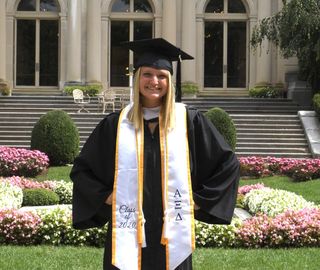- About Us
- Advertise / Support
- Editorial Board
- Contact Us
- CancerNetwork.com
- TargetedOnc.com
- OncLive.com
- OncNursingNews.com
- Terms & Conditions
- Privacy
- Do Not Sell My Information
- Washington My Health My Data
© 2025 MJH Life Sciences™ and CURE - Oncology & Cancer News for Patients & Caregivers. All rights reserved.
Bavencio Shows No Improvement of Overall Survival for Patients with Gastric Cancers

Colleen Moretti, Assistant Editor for CURE®, joined MJH Life Sciences in November 2020. Colleen is a graduate of Monmouth University, where she studied communication with a focus in journalism and public relations. In her free time, she enjoys learning to cook new meals, spending time with her adopted beagle, Molly, or sitting on the beach with a good book. Email her at cmoretti@curetoday.com
For patients with gastric/ gastroesophageal cancer, treatment with Bavencio after chemotherapy shows favorable safety, but no overall survival improvement.
There was no improvement in overall survival found in patients with gastric or gastroesophageal cancer who received Bavencio (avelumab) after induction of chemotherapy, compared to those who continued with chemotherapy only, although it was found Bavencio is favorable in safety, according to data published in Journal of Clinical Oncology.
“To our knowledge, this is the first phase 3 trial of switch maintenance treatment with an immune checkpoint inhibitor in patients with advanced gastric cancers, and its results are informative for design of future trials,” authors note.
A total of 805 patients received first line induction chemotherapy. After, 499 patients were randomly assigned to 10mg intravenously every two weeks of Bavencio (249 patients) or continued chemotherapy (250 patients). Of those receiving Bavencio, 30 had PD-L1— (a protein that keeps the immune system under control) positive tumors, and 24 continuing with chemotherapy were also PD-L1 positive.
There was no significant difference in overall survival (OS), the researcher’s primary endpoint, between the treatments. Median OS for those receiving Bavencio was 10.4 months and 10.9 months for those who continued chemotherapy. At 24 months, OS rates were 22.1% with Bavencio and 15.5% with continued chemotherapy.
As for those with PD-L1—positive tumors, median OS was 16.2 months on Bavencio and 17.7 months on continued chemotherapy. In an analysis of this population, those with a combined PD-L1 positive score of one or greater, OS on Bavencio was 14.9 months and continued chemotherapy was 11.6. Patients with PD-L1—high tumors saw no OS benefit with Bavencio compared to chemotherapy.
Side effects occurred in 233 patients receiving Bavencio and 214 continuing chemotherapy. The most common side effects seen in Bavencio was increased amylase (enzyme converting starch to sugar), increase lipase (protein that helps body digest fat), physical weakness, colitis, loss of appetite, hypotension and inflammation of lung tissue. For those receiving continued chemotherapy side effects included decreased white blood cell count and peripheral sensory neuropathy. Overall, researchers found that Bavencio showed favorable safety in comparison.
Although the trial did not reach the primary end point of improving overall survival in patients with gastric/gastroesophageal cancer authors conclude, “Results suggest potential activity in selected patient subsets and a favorable safety profile, providing guidance for future studies in this challenging disease.”
For more news on cancer updates, research and education, don’t forget to subscribe to CURE®’s newsletters here.
 Download Issue : CURE® Gastrointestinal Cancers 2021 Special Issue
Download Issue : CURE® Gastrointestinal Cancers 2021 Special IssueRelated Content:



